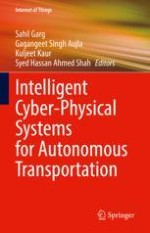2022 | OriginalPaper | Chapter
14. A Meta Sensor-Based Autonomous Vehicle Safety System for Collision Avoidance Using Li-Fi Technology
Authors : Amil Roohani Dar, Munam Ali Shah, Mansoor Ahmed
Published in: Intelligent Cyber-Physical Systems for Autonomous Transportation
Publisher: Springer International Publishing
Activate our intelligent search to find suitable subject content or patents.
Select sections of text to find matching patents with Artificial Intelligence. powered by
Select sections of text to find additional relevant content using AI-assisted search. powered by
